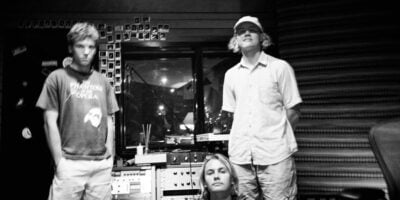Who was Harry Nilsson? He was the guy who John Lennon thought it was cool to be into (and that’s pretty cool). The enigmatic recording artist released 17 albums from 1966 to 1980 – his productivity driven by deep emotional issues alongside a savant-like intelligence that was a constant source of creativity as he rearranged and liberated the tenets of pop music.
Ironically, Nilsson didn’t write his biggest hit – 1969’s ‘Everybody’s Talkin’’ –and the song he made the most money from, ‘Cuddly Toy’, was performed by The Monkees. With such a varying and broad catalogue, the task of summarising Nilsson’s career into a 75-minute cabaret show would ordinarily be a difficult one. But Tim Freedman – the Australian music industry legend and frontman of The Whitlams – has done just that.
“I suspected, and my suspicions have been confirmed, that he has largely been forgotten in the broader consciousness,” says Freedman. “He was a prolific recording artist. Quite a maverick – taking left turns and risks with his music. So with any career with over 15 studio albums, there’s a gem from each time period, resulting in an extremely strong 75 minutes of material. I could probably do two hours if I thought cabaret could sustain such a length.”
The homage to Nilsson is titled Freedman Does Nilsson – A Live Imagining, and features Freedman performing each song in character as Nilsson himself. Born in 1941 in a working-class neighbourhood of Brooklyn called Bushwick, Nilsson saw his father walk out on the family when young Harry was only three. It resulted in an emotionally tumultuous upbringing for Nilsson, who dropped out of school early, but his skill with numbers allowed him to bluff his way into a graduate computing position at a bank.
At night Nilsson stayed up writing, and it was during one of those prolific late-night songwriting sessions that he wrote ‘Cuddly Toy’. He pitched the song to the buzz band of the time, The Monkees, because he thought it would suit Davy Jones’ voice. ‘Cuddly Toy’ was the song that would take Nilsson from bedroom composer to international renown, earning fans in Lennon and Paul McCartney. But with fame and fortune came excess, and Nilsson’s voice began to suffer – though his output remained prolific. Freedman Does Nilsson incorporates this chequered narrative.
“It’s vaguely chronological,” says Freedman. “Around the start are early songs that were pretty highly wrought, almost overwritten in the lyric department with lots of rhymes and intricate patterns. He was a maths genius and you can see that when you take his work apart. So I start with ‘1941’ – that is about a father leaving his son. And throughout the night there are abandonment issues, and how they are reflected in his work, and then I start branching into relationships with other artists like Lennon, McCartney and Randy Newman. And then I need to tackle his decline, because he basically committed a 20-year suicide from ’72 to ’92, so there has to be a little bit of the self-sabotage. Rich fodder for cabaret.”
Nilsson’s life of excess showed he was more than happy to let his vices take hold. Similarly, in the early days of The Whitlams, Freedman was renowned for his penchant for red wine – consuming multiple bottles before, during and after a show. However, Freedman says his indulgence paled in comparison to Nilsson’s.
“Nilsson was heavily into the uppers – as seemed to be the thing in the early ’70s. Whereas I would drink a bottle of wine and retire for the evening, he would be going for days and, you see, he never toured so he could get away with it – not resting his voice.”
SeeFreedman Does Nilsson – A Live Imagining atThe Basement onFriday July 25, tickets available through Moshtix.


































